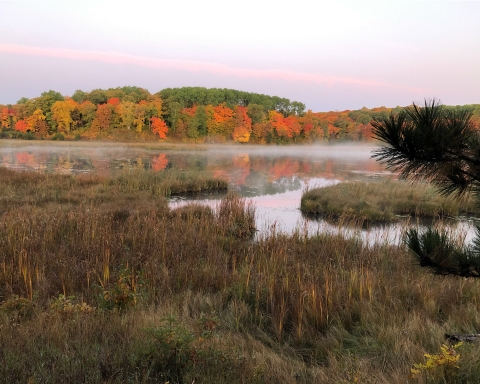We at the U.S. Fish and Wildlife Service believe that working collectively with our Tribal partners goes to the bedrock of our agency’s mission - working with others to conserve, protect and enhance fish, wildlife, plants, and their habitats for the continuing benefit of the American people. Our intent, and the actions that we take, matter. Take a moment to learn about what co-stewardship is and the roadmap we’re using to meet our shared conservation objectives.
As a federal agency, the U.S. Fish and Wildlife Service has a trust responsibility to Tribal Nations. Central to our role in fulfilling this unique trust obligation is that we, as the federal government, seek to support Tribal self-governance and treaty rights, as well as religious, subsistence and cultural interests of federally recognized Tribal Nations. We work with Tribes to safeguard the cultural, treaty and trust resources of any Tribes that may be affected by U.S. Fish and Wildlife Service decisions, as they regard lands, waters and wildlife within our jurisdiction.
What is co-stewardship?
The concept of co-stewardship isn't new to the Midwest Region, as it’s written into the treaties that guide our work with Tribal Nations and known formally as a trust responsibility. Co-stewardship takes many forms, from working with a Tribal Nation to complete joint fisheries and wildlife surveys, to providing technical assistance or formalizing our intent and actions through formal agreements. When solidifying our intent, and to map out the actions we’d like to take, we work with Tribal Nations to create memoranda of agreement. Signed on June 4, 2024, the memorandum of agreement between the White Earth Band of the Minnesota Chippewa Tribe and Tamarac National Wildlife Refuge is a great example of how we’re formalizing both our intent and future actions.
Tamarac National Wildlife Refuge in northwestern Minnesota provides unique opportunities for formal co-stewardship between the U.S. Fish and Wildlife Service and the White Earth Band. This includes refuge lands that are partially located within the boundaries of the White Earth Reservation and previous agreements that allow for White Earth Band members to harvest resources throughout the refuge.
We look forward to collaborating with our Tribal Nation partners as we work toward the shared mission of making a future full of healthy wildlife and habitat. Together we’ll ensure that their respective interests play an integral role in decision making as it relates to the planning and management of federal lands and waters through consultation, capacity building and other means that are consistent with applicable authority.





